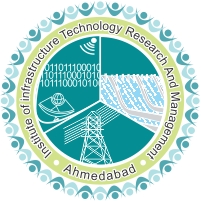Surface characteristics optimization of biocompatible Ti6Al4V with RCCD and NSGA II using die sinking EDM
Authors :- Dikshit, Mithilesh K., Suryansh Singh, Vimal K. Pathak, Kuldeep K. Saxena, Manoj Kumar Agrawal, Vinayak Malik, Karrar hazim Salem, and Muhammad Ijaz Khan.
Publication :- Journal of Materials Research and Technology 24 (2023): 223-235.
Machining of titanium alloy grade V (Ti6Al4V) is very difficult by conventional metal cutting process due to low thermal conductivity, ability to retain strength at elevated temperature, tendency to work harden. This may result in high heat at the cutting zone and the generation of thermal stresses. Therefore, in the present research die-sinking electrical discharge machining is used to machine Ti6Al4v alloy. A non-dominated sorting genetic algorithm (NSGA II) coupled with rotary central composite design (RCCD) based on response surface methodology (RSM) is employed to optimize machining parameters in die-sinking electrical discharge (EDM) machining of Ti6Al4V. A quadratic mathematical model has been developed for material removal rate (MRR) and surface roughness (Ra) in terms of peak current (I), pulse on time (Ton) and pulse off time (Toff) as independent input parameters. Die-sinking EDM experiments are planned using RCCD based on response surface methodology. Results revealed that peak current is the most influencing EDM parameter on both MRR and Ra with PC of 35.86% and 57.10% respectively. MRR continuously increases with peak current. MRR firstly decreases and then increases with an increase in Ton. Ra continuously increases with peak current and starts decreasing after a coded value of 1.5. The Optimization result obtained by NSGA II is validated through confirmation experiments which are in good agreement with the experimental value with an absolute error of 6% and 4.8% in MRR and Ra respectively.

